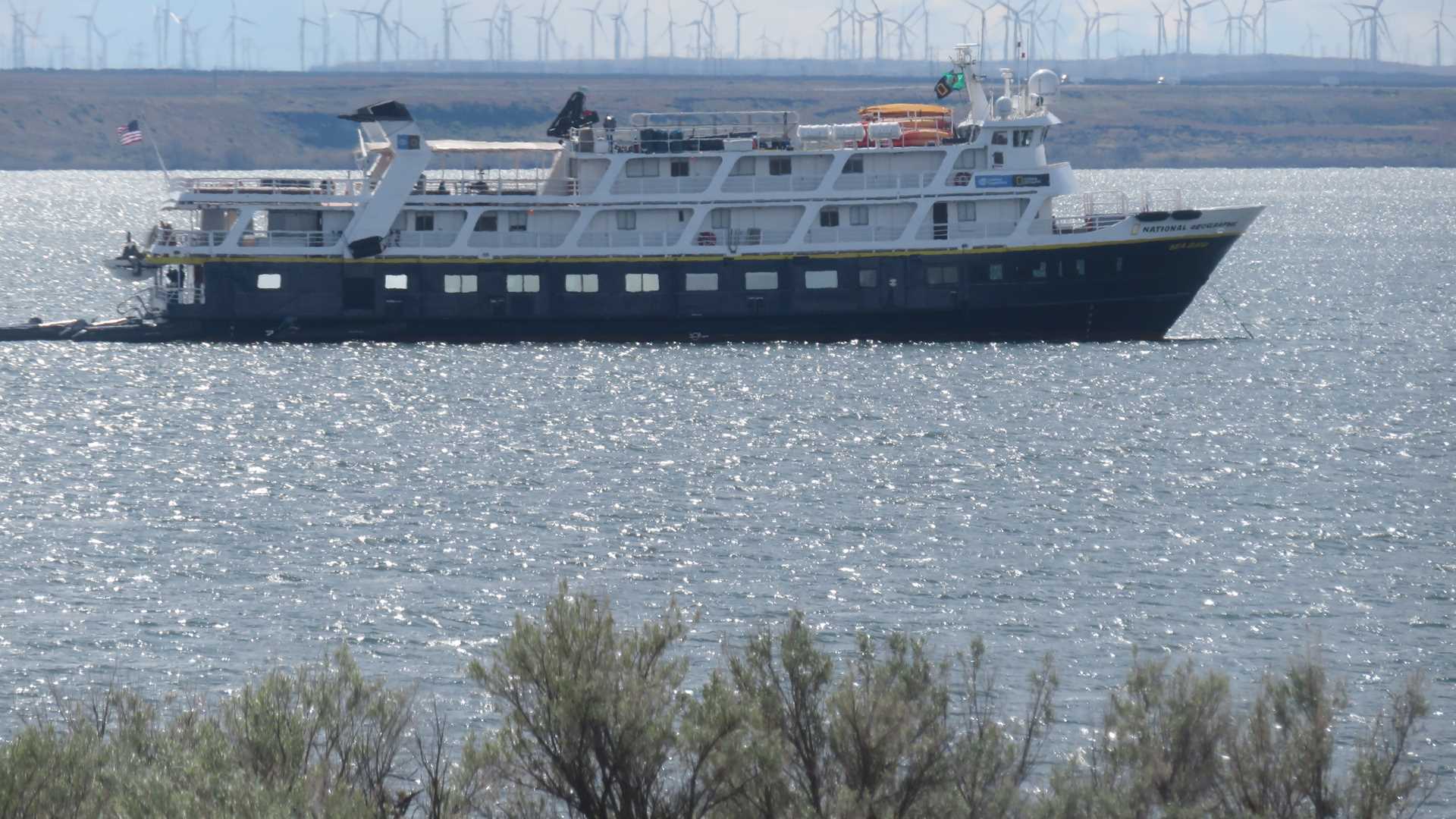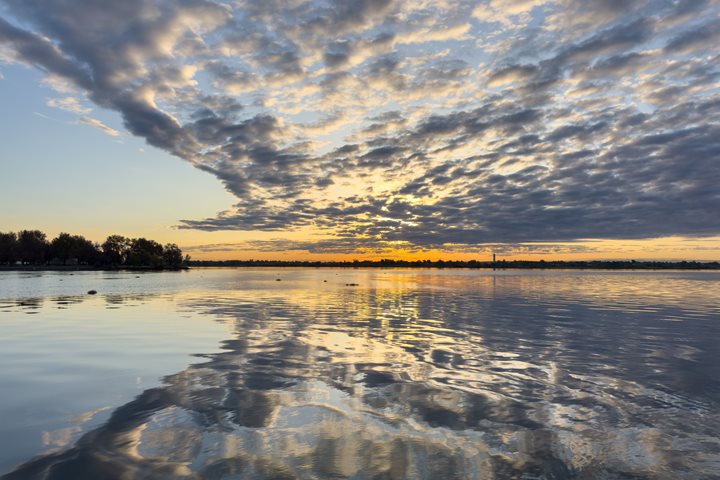After transiting McNary Lock and Dam in the evening, National Geographic Sea Bird anchored at Crow Butte, a scenic location on the Columbia River in Eastern Washington. This feature was created when the John Day Lock and Dam was completed in 1971, and the Port of Benton currently operates it. While the Oregon shore is relatively flat with wide-open topography, the Washington side has retained its rock formations and hills that gradually rise as we head west.
We spent our morning learning from National Geographic author and geographer, Steven Cunha, who presented on the geography of the Pacific Northwest. Naturalist Patrick MacQuarrie then spoke on the modernization of the Columbia River Treaty, a 1964 agreement between the US and Canada for managing the resources of the Columbia River.
After our Zodiac transfer to the dock at the park, passengers were grouped according to interest. One group planned a hillside nature hike led by naturalist Linda Burback. A second group participated in a more strenuous hike to the top of Crow Butte. They encountered a 400-foot gain in elevation, and they enjoyed great views up and down the Columbia River and of the surrounding countryside. A third option or ‘saunter’ was also offered. This group remained along the shoreline. They walked to the southern end of the island and the Overland Trail, which was used by the Lewis and Clark Expedition.
This area has many types of birds and waterfowl, and we enjoyed sightings of Canada geese, mourning doves, a great horned owl, coots, osprey, brants, and others. Notable plants included prickly pear cacti and sagebrush, known as shrub-steppe. The campground area had a large variety of trees, including sycamore and pine. The afternoon concluded with kayaking for those interested.
The evening program included a talk by historian Robert Heacock, who presented on, “Old Timey Medicine–How Did Lewis and Clark Survive?” This provided sobering examples of medical knowledge and supposed “treatments” during the late 1700s and early 1800s. We also had a discussion on the death of Meriwether Lewis.
National Geographic Sea Bird proceeded down the Columbia River and transited the John Day Lock and Dam and its 113 foot lift at about 9:00 p.m. We finally anchored downriver of the Celilo area, at a spot labeled as the “Short Narrows” by the Lewis and Clark Expedition.
Photos by: Robert Heacock, Historian, and Patrick MacQuarrie, Naturalist







